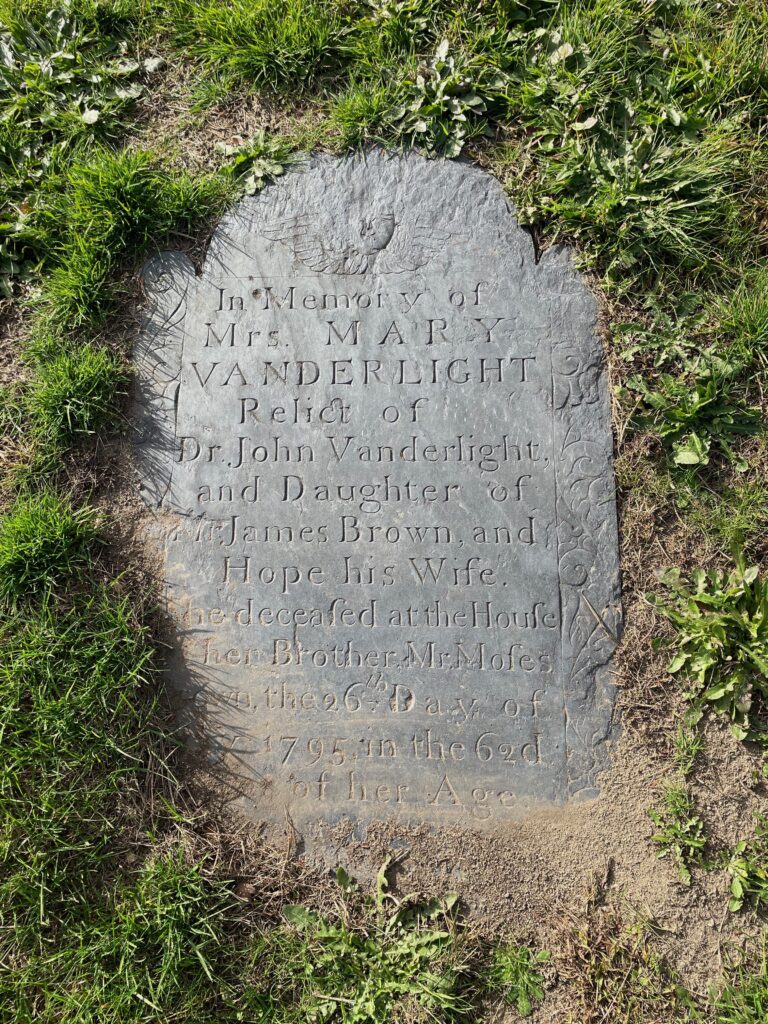Meeting Mary Vanderlight through Her Account Books
Hope (Power) Brown died in 1792 at the age of ninety. Her gravestone told visitors she was “The mother of Nicholas, Joseph, John, and Moses Brown.”
As Karen Wulf recently wrote at Commonplace, that left off Hope’s daughter, Mary (Brown) Vanderlight (1731–95).
“The Brown Brothers Had a Sister” shares what information survives about that member of the prominent Providence family:
As Karen Wulf recently wrote at Commonplace, that left off Hope’s daughter, Mary (Brown) Vanderlight (1731–95).
“The Brown Brothers Had a Sister” shares what information survives about that member of the prominent Providence family:
She married David Vanderlight, a doctor and Dutch immigrant, in the early 1750s. Both her husband and their only child, a baby boy, died in February of 1755.The main documentation for Vanderlight’s life is in account books—hers and other people’s. She started tracking her finances before her marriage, helped her husband manage his practice, and kept going as she had to support herself.
When she died in the spring of 1795, Mary Brown Vanderlight had been a widow for four decades, and lived on her own or with her mother. Like her mother, she remained a stalwart of the Baptist church that their forebears had helped found (though her brothers wandered to Quakerism and the Anglican church). Like her mother, she never remarried. Like her mother, she was the administrator of her husband’s estate, a complex job that came with significant legal and other practical responsibilities.
From the time David died, Mary continued the surviving account books. It looks like she also continued to serve patients at least by selling medicines but maybe also by practicing—or even teaching. As late as 1757 she was billing her neighbor Elisha Shearman for having trained his son in the “arts of apothicary.”Where did Mary Vanderlight learn to keep accounts? Wulf writes that she probably learned that skill from her mother, who for decades managed her own books and tracked who in the family owned what.
She also took up her husband’s role in the library [now the Providence Atheneum] and was listed as one of only two women among the nearly 150 “proprietors” who regularly paid to support—and use—it. . . .
She also kept investing. These investments included, according to a single notation in one of her brother’s accounts, helping to finance the infamous slaving voyage of the Sally.


No comments:
Post a Comment